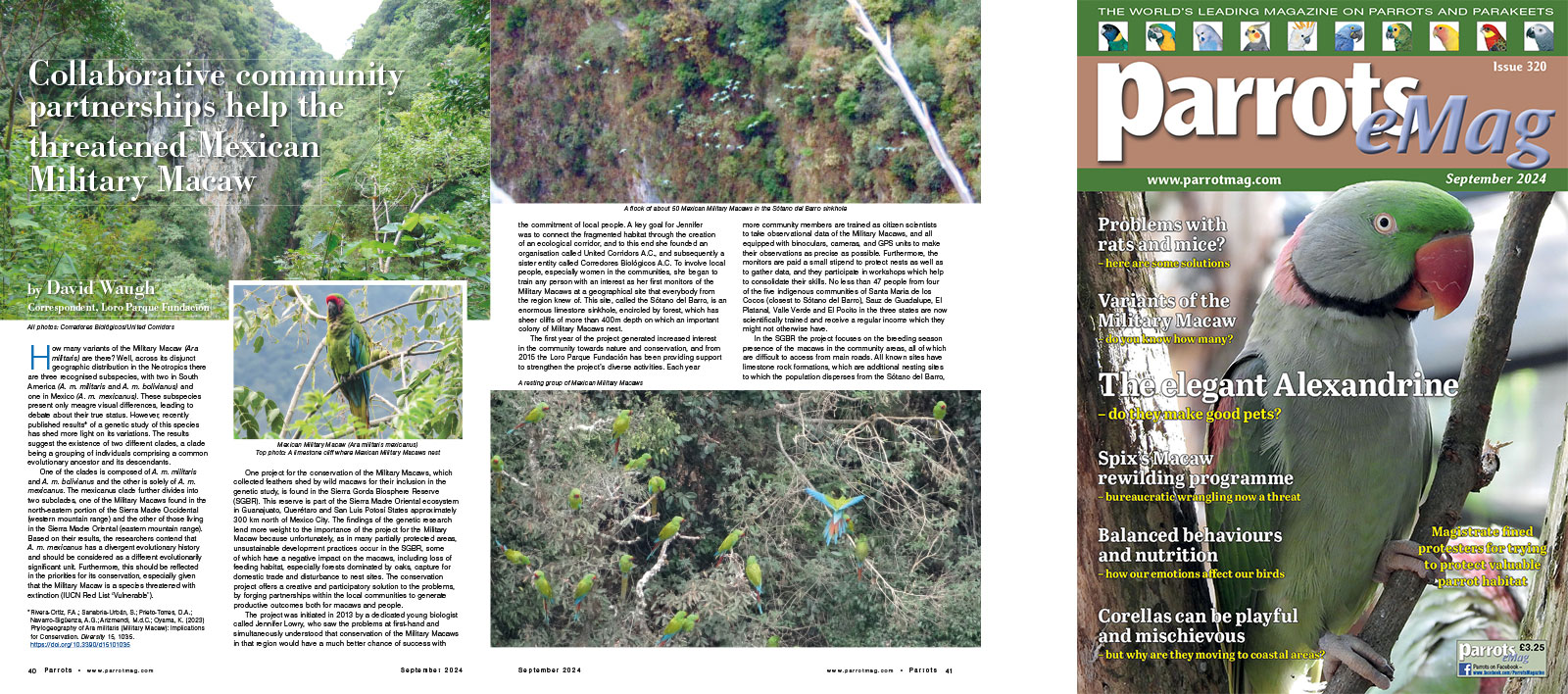
By David Waugh, Correspondent, Loro Parque Fundación
How many variants of the Military Macaw (Ara militaris) are there? Well, across its disjunct geographic distribution in the Neotropics there are three recognised subspecies, with two in South America (A. m. militaris and A. m. bolivianus) and one in Mexico (A. m. mexicanus). These subspecies present only meagre visual differences, leading to debate about their true status. However, recently published results* of a genetic study of this species has shed more light on its variations. The results suggest the existence of two different clades, a clade being a grouping of individuals comprising a common evolutionary ancestor and its descendants.
One of the clades is composed of A. m. militaris and A. m. bolivianus and the other is solely of A. m. mexicanus. The mexicanus clade further divides into two subclades, one of the Military Macaws found in the north-eastern portion of the Sierra Madre Occidental (western mountain range) and the other of those living in the Sierra Madre Oriental (eastern mountain range). Based on their results, the researchers contend that A. m. mexicanus has a divergent evolutionary history and should be considered as a different evolutionarily significant unit. Furthermore, this should be reflected in the priorities for its conservation, especially given that the Military Macaw is a species threatened with extinction (IUCN Red List ‘Vulnerable’).
One project for the conservation of the Military Macaws, which collected feathers shed by wild macaws for their inclusion in the genetic study, is found in the Sierra Gorda Biosphere Reserve (SGBR). This reserve is part of the Sierra Madre Oriental ecosystem in Guanajuato, Querétaro and San Luis Potosí States approximately 300 km north of Mexico City. The findings of the genetic research lend more weight to the importance of the project for the Military Macaw because unfortunately, as in many partially protected areas, unsustainable development practices occur in the SGBR, some of which have a negative impact on the macaws, including loss of feeding habitat, especially forests dominated by oaks, capture for domestic trade and disturbance to nest sites. The conservation project offers a creative and participatory solution to the problems, by forging partnerships within the local communities to generate productive outcomes both for macaws and people.
